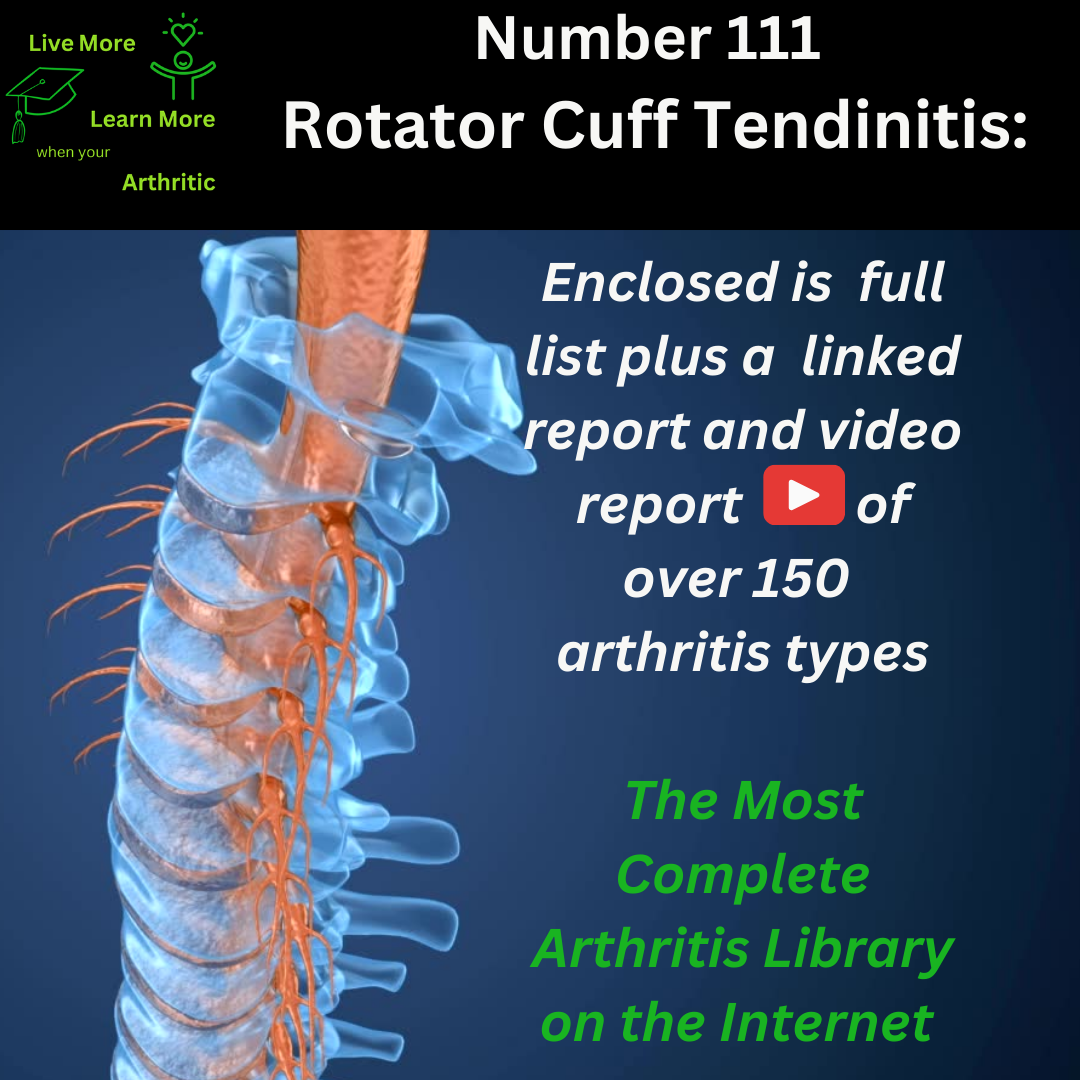
Rotator Cuff Tendinitis: Number 111 of around 150 types of Arthritis
Exploring Rotator Cuff Tendinitis
Rotator cuff tendinitis is a common cause of shoulder pain and discomfort, affecting the tendons and muscles that stabilize the shoulder joint. Let’s delve into the details of this condition, including its impact, management, and potential complications.
The rotator cuff comprises a group of muscles and tendons that surround the shoulder joint, providing stability and facilitating movement. With tendinitis, these structures become inflamed and irritated, leading to symptoms such as shoulder pain (especially with overhead movements), weakness, and stiffness. The pain may radiate down the arm, and there may be difficulty sleeping on the affected shoulder.
Causes and Triggers
Rotator cuff tendinitis can develop due to repetitive overhead activities (such as painting or swimming), traumatic injury, or age-related degeneration of the tendon tissue. Poor shoulder biomechanics and muscle imbalances can also contribute to the development of this condition.
Onset and Risk Factors
The onset of rotator cuff tendinitis is most common in individuals aged 40 and older, although it can occur at any age, especially in athletes or those with physically demanding occupations. Men and women are affected fairly equally, although the prevalence may vary based on specific risk factors such as occupation and lifestyle.
Inflammation and Complications
Inflammation is a key factor in rotator cuff tendinitis, contributing to pain and limited range of motion. Without proper management, this inflammation can lead to further complications such as rotator cuff tears, where the tendon partially or completely detaches from the bone. Chronic tendinitis can also result in degenerative changes within the shoulder joint.
Quality of Life and Proactive Management
A proactive approach to managing rotator cuff tendinitis involves a combination of rest, physical therapy, and modifications to daily activities to reduce strain on the shoulder. Strengthening exercises targeting the rotator cuff muscles, along with stretching and proper ergonomic practices, can help improve shoulder function and prevent recurrence.
 Possible Complications and Interconnected Conditions
Possible Complications and Interconnected Conditions
Complications of untreated rotator cuff tendinitis can include persistent pain, loss of shoulder function, and increased risk of rotator cuff tears requiring surgical intervention. It’s important to be aware of other shoulder conditions that may coexist or share similar risk factors, such as shoulder impingement syndrome or biceps tendinitis.
In summary, while rotator cuff tendinitis can be a source of significant discomfort and functional limitation, proactive management focused on reducing inflammation, strengthening muscles, and optimizing shoulder mechanics can lead to improved quality of life and long-term shoulder health. Early intervention and lifestyle modifications are key to preventing complications and promoting recovery.


